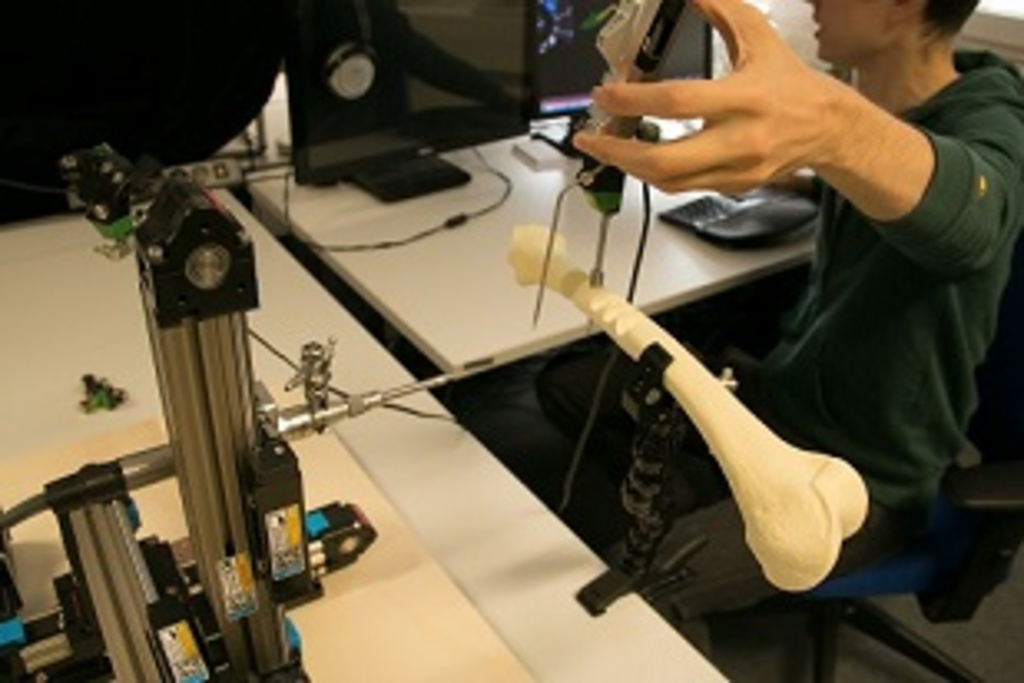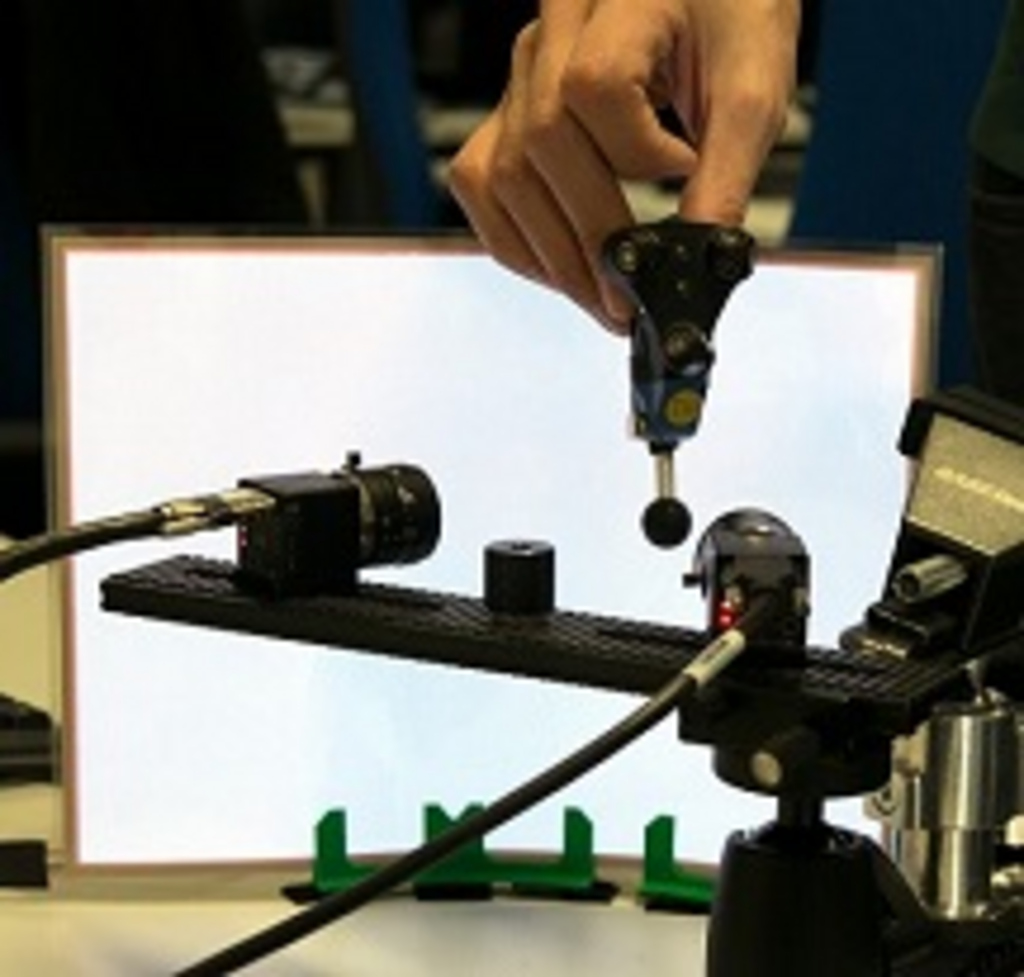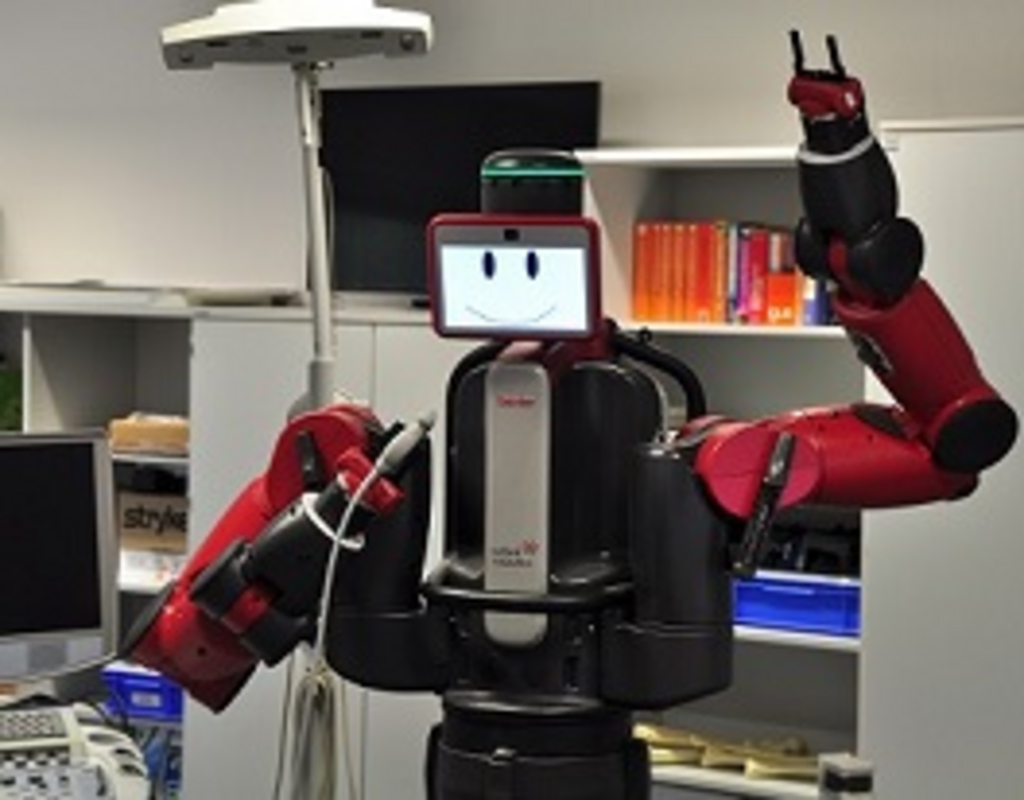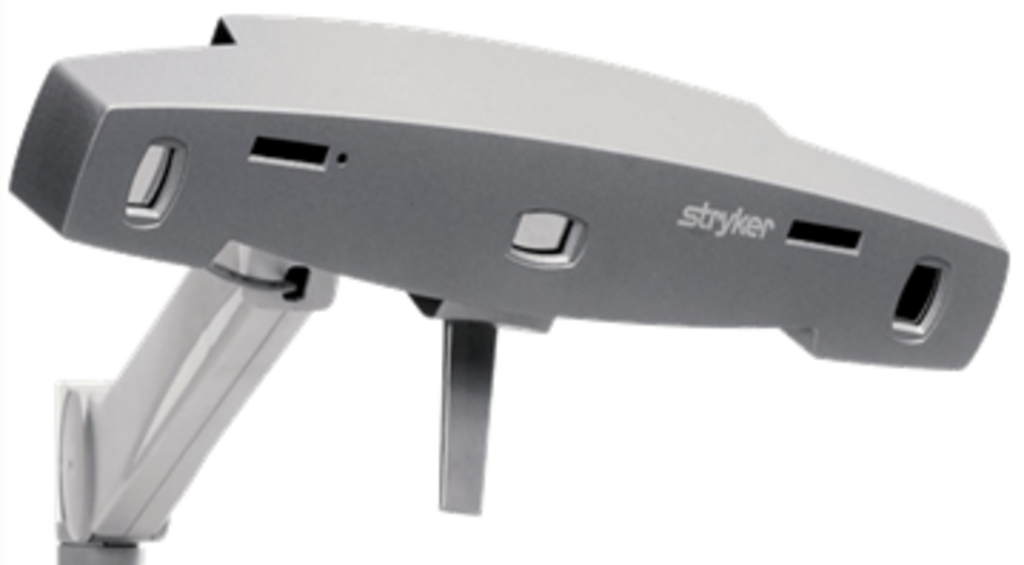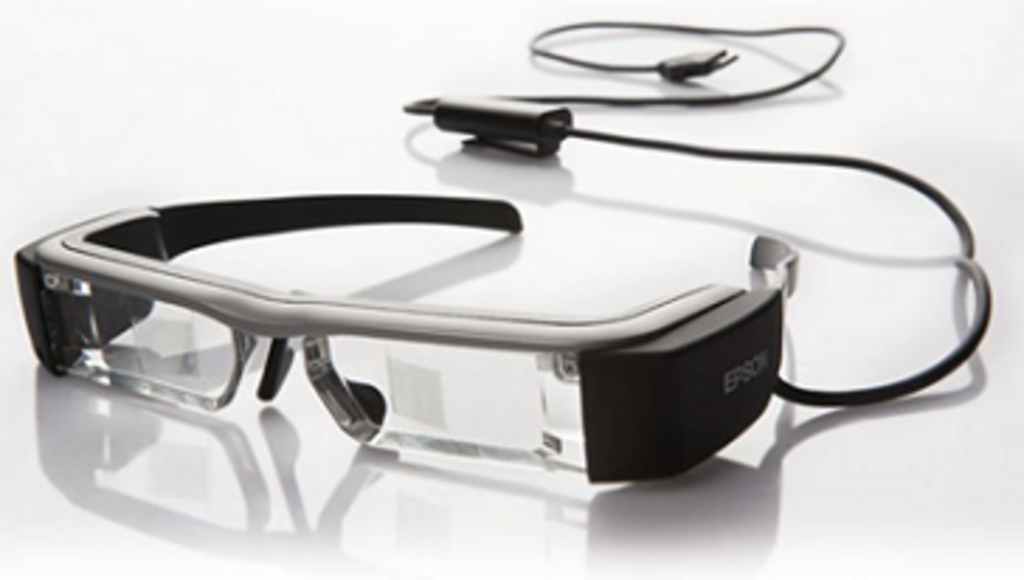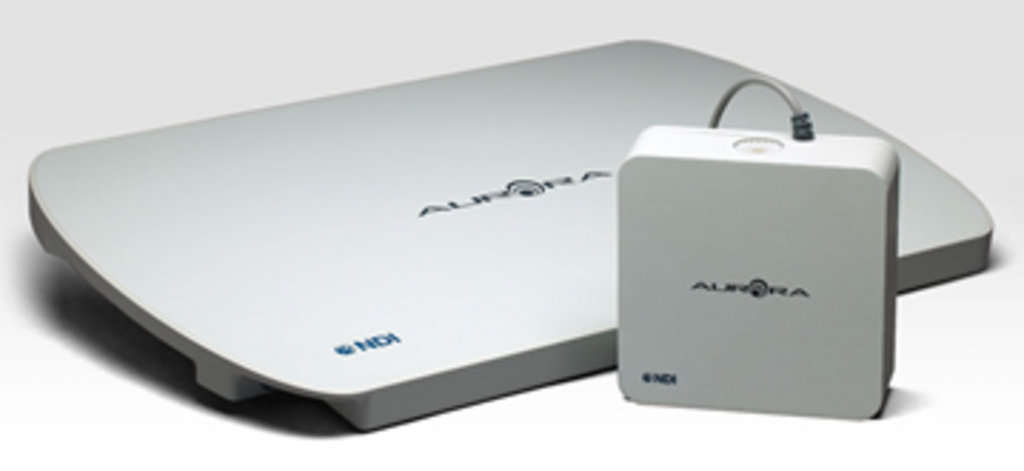Computerassistierte Medizin (CompAssMed)
Computer Assisted Medicine
Profile and objectives
The Laboratory for Computer-Assisted Medicine at Offenburg University of Applied Sciences is a pure research laboratory and offers jobs for employees, doctoral students and students writing their bachelor's or master's thesis.
The scientific work at the Laboratory of Computer-Assisted Medicine focuses on programming in MATLAB and C++, in particular the control of hardware to solve a wide variety of medical problems. Many of these questions include calibration, i.e. finding parameters that are important for the precise use and control of individual hardware components.
Main areas of research
- Navigation in Surgery
- Medical mixed and augmented reality applications
- intraoperative operation planning
- robotics in medicine
- Medical image processing
- Navigated Ultrasound Applications
- Automation of calibration processes
Subject areas for final theses
- Calibration and control of augmented and mixed reality glasses
- Development of end effectors for medical applications
- Non-contact calibration of surgical Instruments
- Calibration of ultrasonic probes
- Synchronization, streaming and superimposition of ultrasound Images
- Eye tracking for mixed and augmented reality glasses
- Control of the Baxter Research Robot for medical applications
- Further development of the non-model-based calibration of cameras developed in the laboratory
- Tracking of a catheter by projection or insertion into augmented reality glasses
Equipment
- Stryker FP 6000" optical navigation system with various tracking tools and pointers
- Surgical milling machine from Stryker
- Electromagnetic navigation system "NDI Aurora" with table top field generator and various sensors
- "Baxter" research robot from Rethink Robotics (two arms with seven degrees of freedom each)
- Artec Eva 3D-Scanner with texture detection
- Zonal ultrasonic System
- Various ultrasound devices of the company Terason
- Augmented and mixed reality glasses from various manufacturers: Microsoft HoloLens, Vuzix STAR 1200 XLD, Meta2, Epson Moverio BT-200
- Industrial cameras from various manufacturers (The Imaging Source, XIMEA, IDS etc.) for image processing applications
- Actuators for the automation of calibration processes and the construction of simple robots
Publikationen
Strzeletz S., Moctezuma J.-L., Shah M., Hubbe U., Hoppe H. (2021). Externe Ventrikeldrainage mittels Augmented Reality und Peer-to-Peer-Navigation, Bildverarbeitung für die Medizin 2021: ProceedingsSpringer Vieweg, Wiesbaden, 1. Auflage, Seite 73-78, ISBN: 978-3-658-33197-9 (Print), link.springer.com/chapter/10.1007/978-3-658-33198-6_18
Hazubski S., Hoppe H., Otte A. (2021). Neues Konzept für die Aktivierung künstlicher Hände durch Augmented Reality. Orthopädie Technik, Verlag Orthopädie-Technik, Wiesbaden, Seite 40-42, ISSN: 0340-5591
Hoppe H., Otte A., Hazubski S. (2020). Method for controlling a device, in particular, a prosthetic hand or a robotic arm (US20200327705A1), patentscope.wipo.int/search/en/detail.jsf
Strzeletz S., Hazubski S., Moctezuma J.-L., Hoppe H. (2020). Fast, robust, and accurate monocular peer-to-peer tracking for surgical navigation, International Journal of Computer Assisted Radiology and Surgery, Springer, Seite 479-489, ISSN: 1861-6410 (Print), link.springer.com/article/10.1007/s11548-019-02111-z
Hazubski S., Hoppe H., Otte A. (2020). Verfahren zur Steuerung eines Geräts, insbesondere einer Handprothese oder eines Roboterarms (DE102019108670A1), depatisnet.dpma.de/DepatisNet/depatisnet
Hazubski S., Hoppe H., Otte A. (2020). Hand prosthetic controlled via augmented reality, Hochschule Offenburg, www.researchsquare.com/article/rs-107496/v1
Hazubski S., Hoppe H., Otte A. (2020). Electrode-free visual prosthesis/exoskeleton control using augmented reality glasses in a first proof-of-technical-concept study, Scientific Reports, Nature Publishing Group UK, ISSN: 2045-2322, www.nature.com/articles/s41598-020-73250-6
Hazubski S., Hoppe H., Otte A. (2020). Non-contact visual control of personalized hand prostheses/exoskeletons by tracking using augmented reality glasses, 3D Printing in Medicine, Article 6, BMC Springer-Nature, ISSN: 2365-6271 threedmedprint.biomedcentral.com/articles/10.1186/s41205-020-00059-4
Hoppe H., Hazubski S., Strzeletz S., Erweiterte Realität in der Medizin (2019). Campus: Magazin der Hochschule Offenburg, Seite 52-53, opus.hs-offenburg.de/frontdoor/deliver/index/docId/3780/file/Campus_gesamt_2019.pdf
Hazubski S., Soekadar S., Hoppe H., Otte A., Neuroprosthetics 2.0 (2019). EBioMedicine, Elsevier, Seite 22, ISSN: 2352-3964
Strzeletz S, Hazubski S, Moctezuma J L, Hoppe H. Peer-to-Peer-Navigation in der computerassistierten Chirurgie. Tagungsband der 17. Jahrestagung der Deutschen Gesellschaft für Computer- und Roboterassistierte Chirurgie (CURAC) 2018, Hrsg. Neumuth T, Melzer A, Chalopin C, S 119 - 124, ISBN: 978-3-00-060786-8.
Klemm M, Hanebeck U D, Hoppe H. Control Algorithms for 3-DoF Handheld Robotic Devices used in Orthopedic Surgery, Journal of Medical Robotics Research, published 30th August 2018 (online ready), doi.org/10.1142/S2424905X19500028.
Hense J, Otte A, Hoppe H. Challenging brain computer Interfaces with a modularized real-time Software framework. Basic & Clinical Pharmacology & Toxicology 2018; 122 (Suppl. 1): 7-8.
Hense J, Sachpazidis I, Hoppe H, Baltas D. Optimization of catheter positioning in HIPO inverse Treatment planning for HDR-brachytherapy of prostate Cancer with centroidal Voronoi tesselation. Basic & Clinical Pharmacology & Toxicology 2018; 122 (Suppl. 1): 6.
Otte A, Hoppe H. Non-invasive brain-machine-interface concepts for everyday use - a step Forward. Sci Robotics 2017: e-letter: <link http: robotics.sciencemag.org content eaag3296 tab-e-letters>robotics.sciencemag.org/content/1/1/eaag3296/tab-e-letters [published online: 7 March 2017].
Becker N, Hoppe H, Otte A. Robotersteuerung mit Hilfe von Convolutional Neural Networks. horizonte 50/ September 2017, ISSN 1432-9174, S. 4-5.
Otte A., Hoppe H. NeuRob: NeuroScience und Robotik. Hochschule Offenburg, Institut für Angewandte Forschung (IAF), Forschung im Fokus, Sommer 2017.
Klemm M, Seebacher F, Hoppe H. High Accuracy Pixel-Wise Spatial Calibration of Optical See-Through Glasses, Computers & Graphics, vol. 64, pp. 51-61, 2017.
Hense J, Sachpazidis I, Hoppe H, Baltas D. Positioning of catheters in HIPO inverse planning with centroidal voronoi tessellation for HDR brachytherapy of prostate cancer, Jahrestagung der BIOMEDIZINISCHEN TECHNIK und Dreiländertagung der MEDIZINISCHEN PHYSIK 10.-13. September 2017, Dresden.
Klemm M, Kirchner T, Gröhl J, Cheray D, Nolden M, Seitel A, Hoppe H, Maier-Hein L, Franz A M. MITK - OpenIGTLink for combining open-source toolkits in real-time computerassisted interventions, International Journal of Computer Assisted Radiology and Surgery; pp 1-11. (TR)
Klemm M, Seebacher F, Hoppe H. Flexible Three-dimensional Camera-based Reconstruction and Calibration of Tracked Instruments, 19th International Conference on Information Fusion (FUSION), Proceed., 5. bis 8. Juli 2016; pp 861-867.
Hoppe H, Seebacher F, Klemm M. Nicht modellbasierte Kalibrierung von Kameras mit Monitoren, T. Tolxdorff, T. M. Deserno, H. Handels, H.-P. Meinzer (Hrsg.): Bildverarbeitung für die Medizin 2016, Proceed., 13. bis 15. März 2016, Berlin; S. 50-55.
Klemm M, Seebacher F, Hoppe H. Non-parametric Camera-Based Calibration of Optical See-Through Glasses for AR Applications, 2016 International Conference on Cyberworlds (CW), Proceed., 28. - 30. September, Chongqing; pp 33-40.
Otte A., Hoppe H. Hybrid SPECT/US. Radiology. 2015 Jan;274(1):304-5. doi: 10.1148/radiol.14141312.
Klemm M, Hoppe H, Seebacher F. "[Poster] Non-parametric camera-based calibration of optical see-through glasses for augmented reality applications." Mixed and Augmented Reality (ISMAR), 2014 IEEE International Symposium on. IEEE, 2014.
